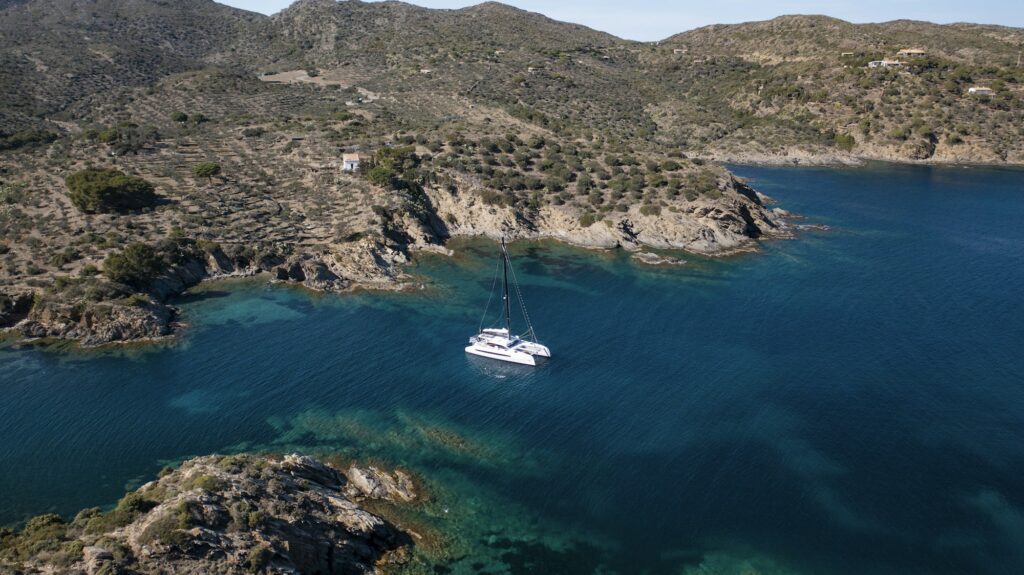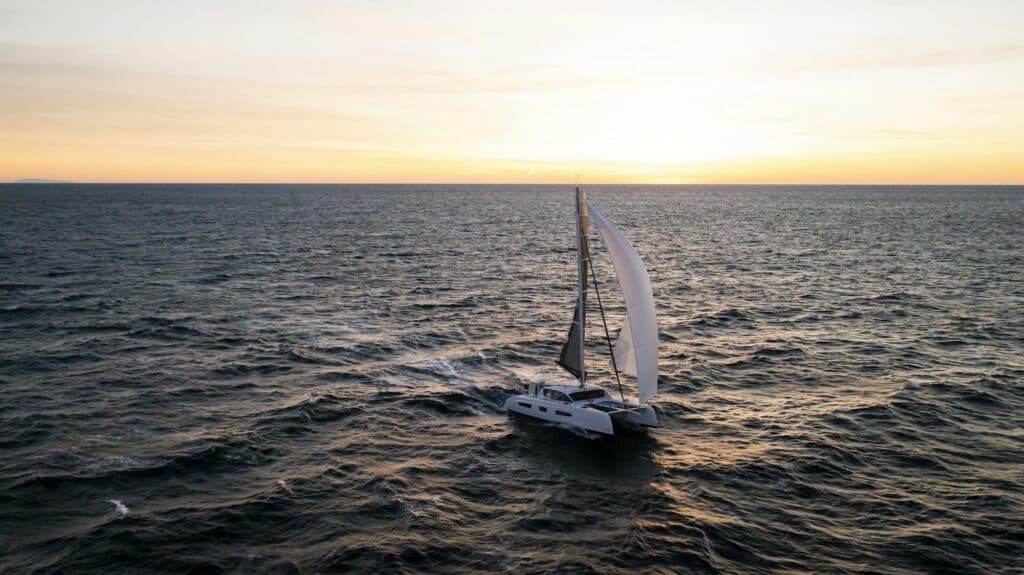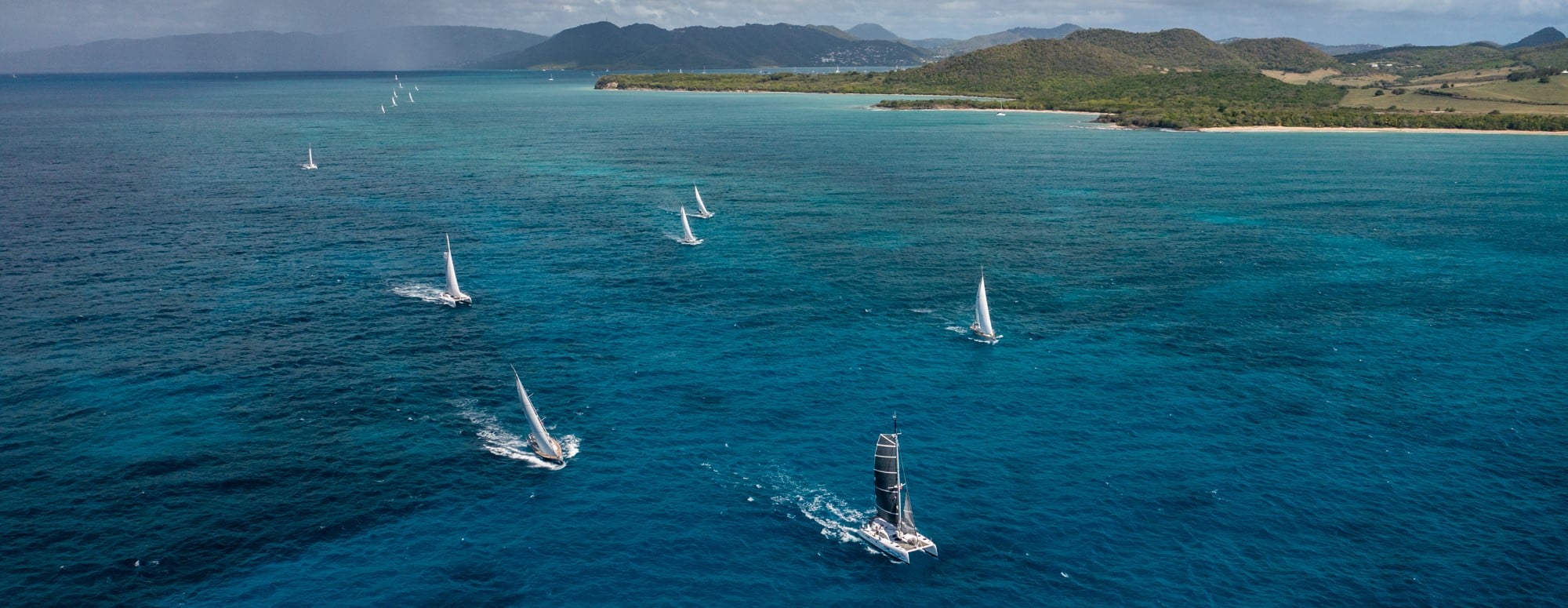
Author: Nikki Henderson
For most professional sailors, winters are characterised by wet, warm and windy Caribbean racing. Alas, Covid19 brought an end to the usual scene back in 2020. Saying that, I was lucky enough to head out West albeit in a more mellow fashion; I spent the month maintaining 59-Norths’ 48’ and 59’ swan, managing their transition to commercial ocean-going vessels (‘CAT-0 for anyone in the trade).
If you are unfamiliar with Swan, they are one of the most famous monohull boatbuilders, renowned for their feminine lines and impeccable craftsmanship. However, they were not built to comply with the extensive commercial requirements of the 21st century such as the stipulation for water-tight bulkheads, hence my month working at anchor. For anyone owning an Outremer already, I can confirm that those bulkheads at the front were worth every hour that they added to the build time because added them decades later is no mean feat! Mission was successfully accomplished for anyone who is interested.
Aside from being fortunate enough to work on the water, one of the bonuses of the last month was my debut introduction to the life of a cruiser. That is … on the days that I wasn’t scrunched up in the bilge servicing engines with a leaking (found out too late) oil extractor pump, or other equally filthy jobs. It may surprise you to hear, that although I have spent the majority of the last 10 years at sea, I’ve barely tasted the cruising lifestyle. On the rare occasion that I’ve spent an evening on anchor, I’ve always had one of my hats one: as a racer – studying not the sunset, but how the wind funnels off the headland; as an instructor – considering not where the beach is, but the landmarks for our three-point-fix; as the skipper – the sober responsible adult for my crew.
The cruising community in Antigua was bustling in comparison to the rest of Europe in February. Hundreds of families, couples, and friends who were fortunate enough to have had the choice, had made the bold but understandable decision to leave their European confinement for the fresh clean air, crystal clear waters and healing UV rays of the Caribbean. Amongst these people, were an eclectic group of old friends of mine: Lance and Claire, old Clipper Race friends on their steel expedition yacht; Nigel and Sally, the parents of a good schoolfriend of mine on their Oyster 72; Riley, Elayna and Lenny on La Vagabonde, the Outremer 45; and four British teenagers on their gap year. Just this snapshot proves that the liveaboard community is the most accepting within the sport of sailing.
Post 14-day quarantine, I joined La Vagabonde for a (very) short sail from Falmouth Harbour to English Harbour. We dropped the hook off Galleon Beach and were in good company with three or four other Outremers who did not hesitate to jump in their dinghies and shout ‘hi! We watch your videos!’ to us. Naturally, I smiled and waved – despite them mostly talking to Lenny 😉
As we sat in the cockpit and looked out at the unbelievably beautiful surroundings, I couldn’t help but feel overwhelmed. After two weeks below decks on an old dark wooden monohull, the contrast was astounding. It was like transitioning from a smoky tavern drinking Manhattan cocktails whilst reclined on an aged leather couch, to the penthouse bar-stool of a minimalist ultra-modern hotel sipping a martini.
I was due to write this blog about the transition from monohull to multihull sailing and had expected that the majority of it would be about dagger boards, less heeling and feeling, and what it’s like with the extra ‘maran’, as Riley and I were joking. However, for most yacht owners, about 90% of their time will be spent on anchor or moored up in a marina, and just 10% or 20% will be spent at sea sailing, and heeling, and feeling the effect of the ‘marans’. So this debut cruiser life experience was critical article research.
The most impactful change from a monohull to a multihull is that everyday life moves up a storey or two. The location and flow of spaces and rooms and people are critical to defining the heart of a home. The heart of the home shapes how the residents and guests spend their time. For any liveaboards or long-term cruisers, just this difference in cockpit level affects your entire experience onboard.
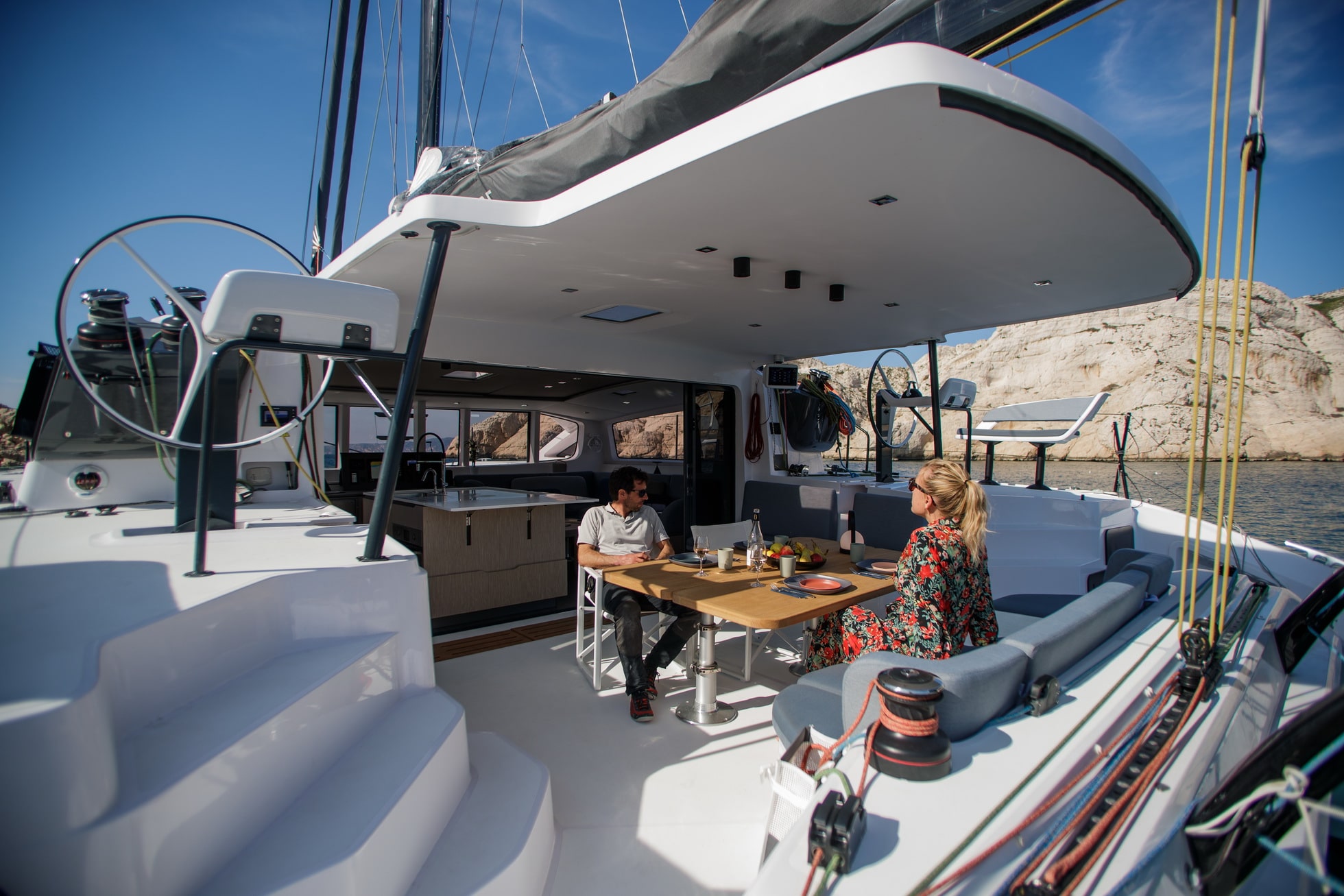
First: life in the tropics. Unless in a multi-storey superyacht with air-con, life on a monohull in hot weather revolves around the cockpit. People enjoy taking advantage of the glorious view and refreshing breeze, whilst avoiding the stuffy galley, dark saloon and sweaty people down below. On a multihull this is entirely the opposite. The open plan living style means that you are all in it together in the fresh air – cooks in the galley, navigators at the chart table, children playing on the nets, dinner guests sipping cocktails and even snorkelers on the swim platforms. NB Not good when chopping onions. This is much unlike a monohull where daily life is split above and below decks. It’s common for a few people to be pulled away from a good conversation at dinner time, or a sailing manoeuvre, to the seclusion of galley cooking, which can really break the flow of the evening. At sea, the loss of horizon can have more than social implications, possibly resulting in a rapid onset of seasickness.
Our November Atlantic crossing in 2019 was far from tropical – I can confirm that on an Outremer 45, the heart of the home does not move with colder weather. As the cold seawater chilled the hulls whilst the warm air rose, the saloon became the warmest zone. Therefore, all of us – cooks, sailors, baby and passengers – could still spend time together– Elayna playing with Lenny, Riley checking the weather, Greta stirring the soup, Svante and myself chatting about life at home. It was easy to multi-task too; the large windows and high aspect view-point meant we could all keep a look out even when we were off watch. Fiery sunsets, a dry sunrise (despite the rain at daybreak), squalls, whale spouts, mammoth 20-foot waves – you can see it all from the comfort of your pyjamas. A monohull in the winter is wonderfully cosy too. My memories of drinking hot chocolate, playing cards with friends, all snuggled up together on the tiny saloon couch will stay in my heart forever. They are precious memories, but I couldn’t tell you anything about the weather or what the skipper was doing.
“They’re perfect for a dinner party, but you just don’t get the same feeling sailing do you?” said Nigel, as we had that age old mono vs multi debate. Nigel is a die hard monohull sailor. Now just over 60, he has owned six boats since the age of 25 – all monohulls – and I don’t think will ever be converted – but I played devils’ advocate all the same.
“You’d be surprised I think,” I replied. “Even upwind, whilst it wouldn’t rival a well-trimmed performance monohull, it certainly would beat any mass production cruising monohull with angles and speed. Plus if you are looking at VMG, then there is no comparison.” I’ll leave the experienced Outremer sailors to talk specific numbers, but the speed and angle conversation normally surprises monohull sailors. Catamarans are famous for being pigs upwind. I’d say that Outremers and other performance catamarans with narrow hulls, and lightweight stiff structures undermine that assumption.
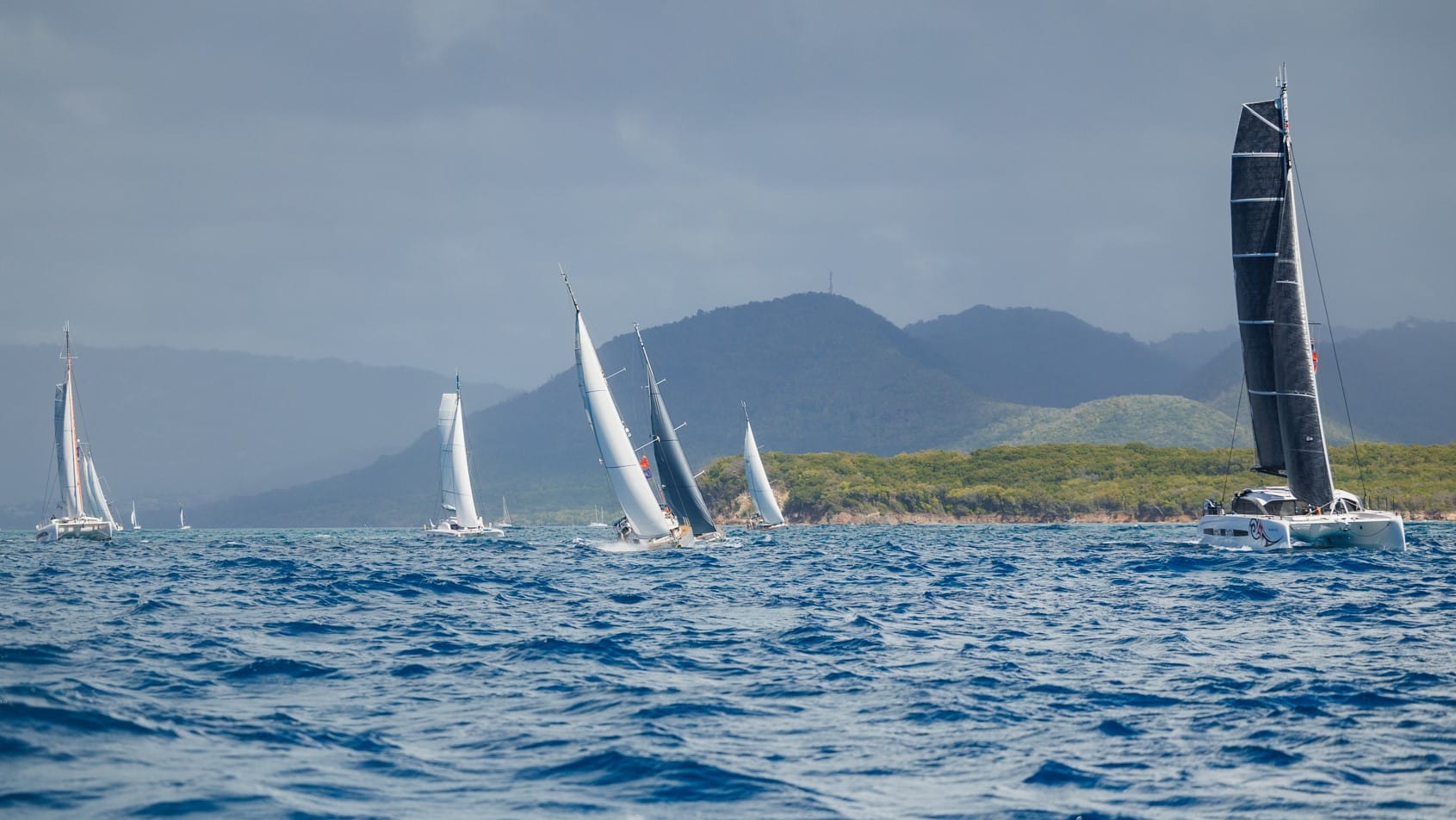
I continued, “To be honest, I wouldn’t buy a catamaran for upwind sailing. I’d buy it for the downwind stuff. To achieve equivalent downwind speeds on a monohull – surfing at 20 or 25 knots regularly – I feel the skill level required, the sail area needed, and the technical specifications would be so much higher. Speed feels less accessible on a monohull.”
The transition from sailing a monohull to sailing a multihull is not particularly steep. However, it is important to respect the potential power that a multi-hull like a catamaran can harness. I would recommend hiring an experienced multihull sailor for a week or so on the first voyage to steer you in the right direction. My first crossing on a multi-hull was on La Vagabonde, and it was certainly a dive into the deep end. So, this is a “do as I say, not as I do” type blog. I hope you can take this as confidence that it is not an unachievable jump for any monohull sailor, but heed caution too.
The main difference between one hull and two is that the boat becomes less communicative. For example, you do not have the obvious signs that you are overpowered like the submersed toe rail, or the yacht uncontrollably rounding up into the wind on a catamaran. Sailing with too much cloth up can be a safety issue and is why I would recommend getting some ‘translation’ help at first. In time, you will learn to focus on different things: the windspeed, the leeway, the fore-aft slant (is the bow diving?) and build a more finessed connection with the aggression with which the boat is accelerating forwards. This is all less intimidating than it sounds. It’s arguably a slower learning curve and requires some patience, but the upside is that you stay remarkably drier during the learning process and return to the dock with considerably less bruises!
Nigel considered the response and then replied with a typical answer in a conversation like this.
“I suppose you are probably right. But you just can’t beat that feeling of the boat heeling, and the hull humming, and everything just cutting through the water so beautifully as you can on a monohull.”
The conversation of monohull v.s. multihull is often discussed between sailors. But few sailors have actually sailed extensively on both a monohull and a multihull. Certainly not at similar times in their life where they require similar characteristics from their vessel. This last point is the key to the decision on whether to buy a monohull or a multihull – in the same way you decide what house to buy – what do you need it for?
Like Nigel, if I was to buy a boat alone or with my partner, I would be inclined to buy a monohull because I have grown up a monohull sailor. The experience of heeling over, the connection I feel due to that lean, the curvature of the hull and how it affects the movement of the boat, the slip of the keel and the break of the waves on my skin – these are things that I connect on a subconscious level with good sailing. This is my happy place.
However, if I were planning to live on a yacht for several years and sail around the world with small children, or elderly relatives, or invite lots of non-sailing friends on for relaxed cruising trips I would seriously consider a multihull. This consideration would strengthen if I had a freedom to choose my schedule to align with prevailing winds and flatter seas. The option to average 11 or 12 knots a day and avoid a big storm, whilst living in a relatively stable boat and still home schooling my children would be the safer option. It would also be better for morale considering the company. The reduced swing in an anchorage, ample sunbathing space on the nets, and not one but two swim platforms definitely makes for a better ‘holiday’ experience. If I could afford it, I could always strap a one or two man dinghy to davits to get my heeling-feeling kicks!
To conclude, for anyone considering the jump from a monohull to a multihull my closing advice or thoughts would be the same as buying clothes, or decorating a house, or taking up a new hobby – don’t knock it till you’ve tried it. It might just surprise you.

